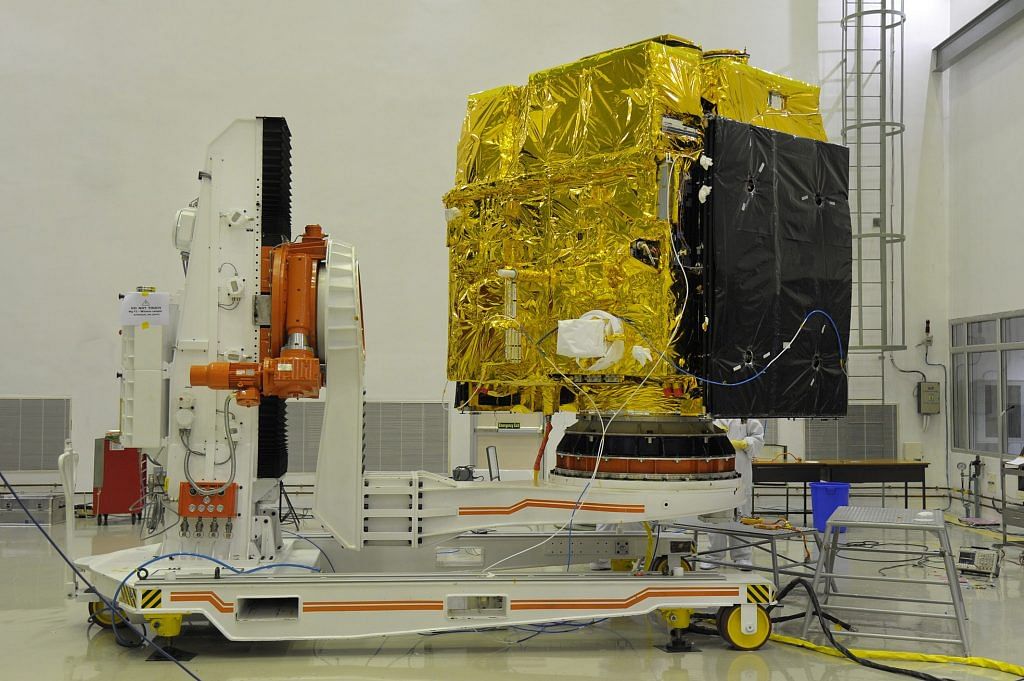Lack of public outreach and awareness about its work has been an old drawback for ISRO.
Bengaluru: The Indian Space Research Organisation (ISRO) wants to bust the web of jargon that encases much of science literature. And helping it do so is the Indian space observatory AstroSat.
Eager to arouse public interest in astronomy and science, a team of field experts from ISRO and the Astronomical Society of India (ASI) will now break down complex research papers on AstroSat findings to a layperson’s language to make it accessible to the wider public.
“The new initiative, to summarise AstroSat-based research papers for the public, will be aimed at the level of high school and college students, but will be made available for everyone,” said Niruj Ramanujam, a member of the outreach team.
The initiative is the second chapter of a year-old effort to publicise the observations made by AstroSat that has been spearheaded by the ASI public outreach and education committee (POEC) along with ISRO’s AstroSat training and outreach team.
Also read: Scientists create quantum switch that can jumble sequence of events
Since 2017, the team has shared on social media photographs and pictorial representations of data captured by AstroSat on its rounds around the Earth.
From unusual objects such as pulsating spinning neutron stars orbiting other companion stars, as well as usual ones like young stars from far away galaxies, and the odd flaring black hole — the photographs have helped familiarise the public with several wonders of our vast, endless universe. Accompanying them are detailed descriptions in simple language that drive home their significance to the most science-wary user.
Eyes in the sky
When it was launched on 28 September, 2015, AstroSat was heralded as a major scientific and technological achievement for our country.
It is India’s first dedicated orbiting space observatory that is used extensively by research institutions everywhere. It has several sets of eyes; and it can look at objects in the sky or patches of the sky in ultraviolet, gamma rays, and X-rays.
Observing astronomical objects at these different wavelengths provides a lot of information that visible light cannot, such as chemical composition, temperature, etc.
The satellite has five telescopes, four of which can look at the same patch of sky simultaneously, observing the same objects or phenomena in different wavelengths.
One upside of such imaging is spectacular pictures, which gave rise to an AstroSat Picture of the Month (APOM) series last year that features brilliant images.
Started in 2017, the APOM series showcased 12 brilliant images.
“We also post them on the POEC Facebook page ASI POEC as well as AstroSat Science, Twitter feed and the Instagram page (@publicastronomy),” said Ramanujam. “In addition, ISRO posts these on their update page,” he added.
The descriptions alongside APOM images, said Ramanujam, are written with a high school student in mind. Talking about the response to the initiative, he said posts on Facebook elicited the highest response and reach, with the feature particularly popular among students and amateur astronomers.
For the budding astronomers
As APOM is becoming increasingly popular and each picture has a lot of scientific and technical background elaborated by different sections of scientists, the team also plans to start issuing a press release with each photo.
“Researchers from 10 institutions were involved in building AstroSat (including two from outside the country),” said Dr V. Girish, a programme manager for astronomy at ISRO.
“Apart from them, the observatory data has been used by people from all the IISERs, many IITs, as well as universities like the IIST (Indian Institute of Space Science & Technology), University of North Bengal etc,” he added.
He said that, as of last week, 835 scientists from 47 countries had used AstroSat data.
The idea behind boosting outreach is to enhance public understanding of Indian astronomy and science, create awareness about Indian science abroad, and, of course, encourage future generations to be interested in science.
“The universe is a fascinating place, which has continued to reward humans with incredible images, exotic objects, unimaginable beauty, and, of course, path-breaking advances in our understanding of physics,” said Ramanujam.
Also read: BBC story on ISRO top engineer focuses more on her cooking than her scientific work
“Our project is one small step in bringing all of this to the Indian public at large. We also hope that initiatives like these will motivate more students to take up science, if not astronomy, as their future careers,” he added.
A similar outreach programme has also been built around the exploits of ISRO’s Mars Orbiter Mission, orbiting the Red Planet since 2014, which regularly tweets photos and conversational tweets that often draw from millennial slang. There are also occasional shout-outs to other orbiters.
